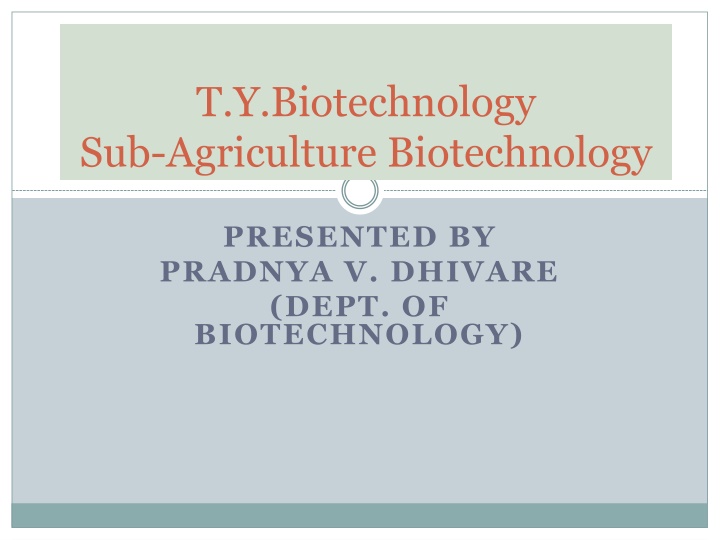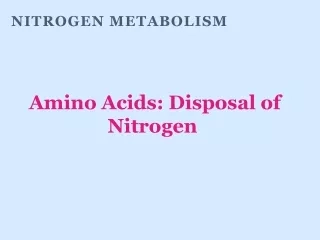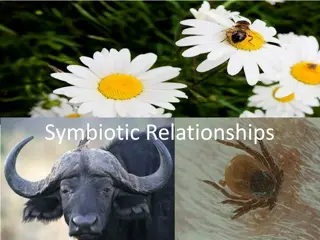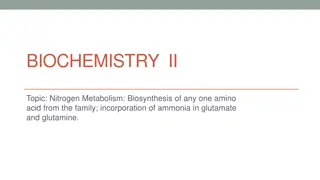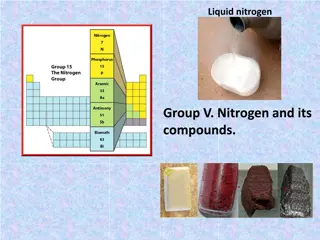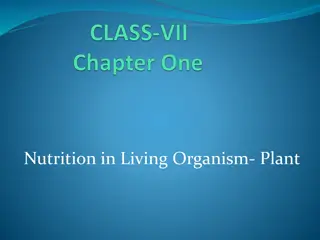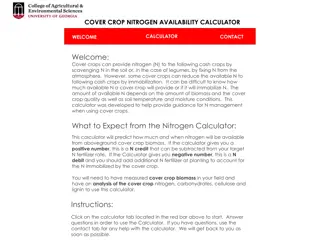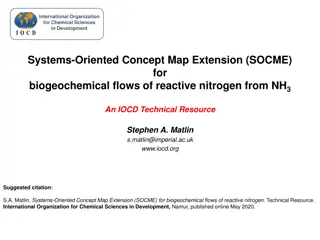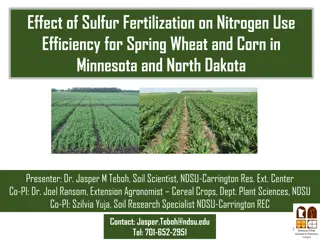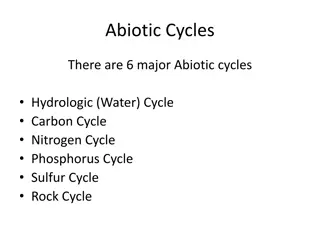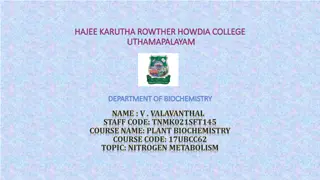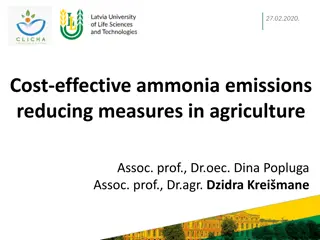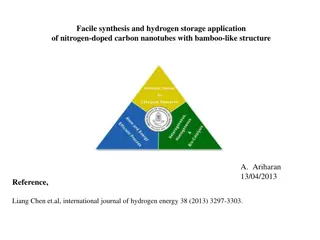Nitrogen Fixation and Symbiotic Relationship in Agriculture
Nitrogen fixation is a crucial process where nitrogen is converted into ammonia by nitrogen-fixing bacteria, benefiting plants like legumes. Symbiotic nitrogen fixation involves a mutualistic exchange between plants and bacteria, exemplified by Rhizobium species. This symbiosis leads to the conversion of atmospheric nitrogen into ammonia within root nodules, providing essential nutrients for plant growth.
Download Presentation

Please find below an Image/Link to download the presentation.
The content on the website is provided AS IS for your information and personal use only. It may not be sold, licensed, or shared on other websites without obtaining consent from the author.If you encounter any issues during the download, it is possible that the publisher has removed the file from their server.
You are allowed to download the files provided on this website for personal or commercial use, subject to the condition that they are used lawfully. All files are the property of their respective owners.
The content on the website is provided AS IS for your information and personal use only. It may not be sold, licensed, or shared on other websites without obtaining consent from the author.
E N D
Presentation Transcript
T.Y.Biotechnology Sub-Agriculture Biotechnology PRESENTED BY PRADNYA V. DHIVARE (DEPT. OF BIOTECHNOLOGY)
Nitrogen Fixation and Biofertilizer Definition of Nitrogen Fixation: Nitrogen fixation is a process by which nitrogen in the air is converted into ammonia (NH3) or related nitrogenous compounds by some nitrogen-fixing bacteria have symbiotic relationships with some plant groups, especially legumes. The prokaryotes/microorganism are called nitrogen fixer.
Symbiotic Nitrogen Fixation Definition : Symbiotic nitrogen fixation is part of a mutualistic relationship in which plants provide a niche and fixed carbon to bacteria in exchange for fixed nitrogen. Examples of symbiotic nitrogen-fixing bacteria include Rhizobium, which is associated with plants in the pea family, and various Azospirillum species, which are associated with cereal grasses.
Rhizobium symbiosis Rhizobium is a genus of Gram-negative soil bacteria that fix nitrogen. The bacteria colonize plant cells within root nodules, where they convert atmospheric nitrogen into ammonia using the enzyme nitrogenase and then provide organic nitrogenous compounds such as glutamine or ureides to the plant.
Rhizobia are found in the soil and after infection, produce nodules in the legume where they fix nitrogen gas (N2) from the atmosphere turning it into a more readily useful form of nitrogen. From here, the nitrogen is exported from nodules and used for growth in the legume. Example of Rhizobia- Rhizobium leguminosarum Rhizobium meliloti
Non Symbiotic Nitrogen fixation Microorganisms which pass independent life and fix atmospheric nitrogen are known as free living diazotrophs. There are two groups of such micro-organisms : bacteria and cyanobacteria (blue-green algae). Based on the mode of nutrition (carbon, nitrogen and oxygen and requirement of reducing groups) bacteria are divided into (i) aerobic bacteria (Azonomas, Azotobacter, Beijerinckia, Mycobacterium, Methylomonas) (ii) facultative anaerobic bacteria (Bacillus, Enterobacter, Klebsiella, etc.) (iii) anaerobic bacteria (Clostridium, Desulfovibrio, etc.) (iv) photosynthetic bacteria (Rhodomicrobium, Rhodopseudomonas, Rhodospirillum, Chromatium, Chlorobium,
Biofertilizer Defination -A biofertilizer is a substance which contains living microorganisms when applied to seeds, plant surfaces or soil, colonize the rhizosphere or the interior of the plant and promotes growth by increasing the supply or availability of primary nutrients to the host plant.
Biofertilizers include the following: symbiotic nitrogen fixers, Rhizobium spp.; non-symbiotic, free-living nitrogen fixers (Azotobacter, Azospirillum, etc.); algal biofertilizers (blue-green algae or blue-green algae in association with Azolla); phosphate-solubilising bacteria; mycorrhizae; organic fertilizers.
